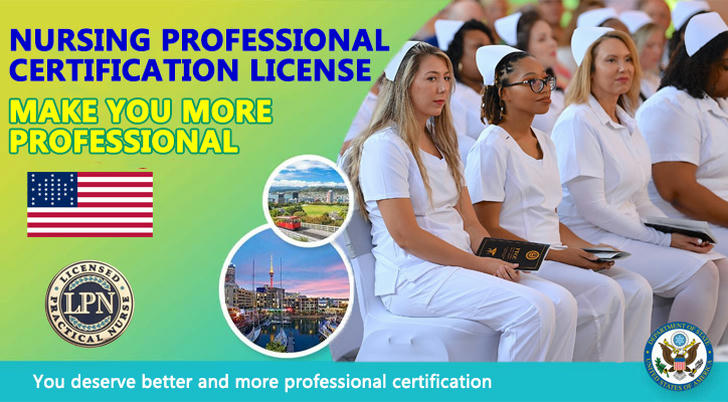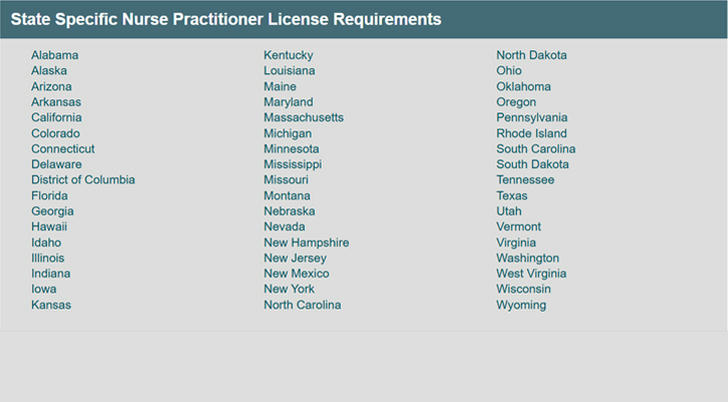👩⚕️ LPN Guide: The Importance and Access to Professional Nursing Licenses
Nursing is a highly specialized profession with steadily increasing demand. Unlike many other fields, the healthcare industry places greater demand on higher-level licensed practitioners. According to recent data, there are approximately 3,236,288 licensed Registered Nurses (RNs) in the U.S., compared to 816,687 Licensed Practical Nurses (LPNs). This reflects differences in skill levels, professional responsibilities, and societal needs.

Overview: Comparing LPN and RN Roles
🔹 What is an LPN (Licensed Practical Nurse)?
An LPN provides basic nursing care under the supervision of RNs or physicians. Responsibilities include monitoring vital signs, administering medications, assisting with hygiene and mobility, and documenting patient information. It is often the first step into the nursing profession.
🔹 Key Differences Between LPN and RN
| Comparison | LPN | RN |
|---|---|---|
| Education Length | ~1 year | 2–4 years |
| Training Focus | Basic nursing care | Advanced care, clinical decision-making |
| Authority Level | Limited | Full patient assessment and complex care |
| Average Salary (BLS) | ~$54,000/year | ~$81,000/year |
| Career Path | Can bridge to RN | Can advance to APRN or leadership roles |
🔹 Who is the LPN path suitable for?
LPN Nursing is ideal for high school graduates, career changers entering the healthcare industry, individuals seeking quick and stable employment, individuals aiming to grow from an entry-level nursing position, and returning nurses or mid-career professionals.
📊 Age Distribution of Licensed Practical Nurses (LPNs)
| Age Group | Common Background | Percentage Trend / Notes |
|---|---|---|
| 18–24 years | Recent high school or college graduates | Often first-time job seekers in healthcare |
| 25–34 years | Career starters or early switchers | High enrollment in LPN programs |
| 35–49 years | Career changers or returning caregivers | Seeking stable, family-friendly jobs |
| 50–64 years | Rejoining workforce or semi-retired workers | Increasing trend due to flexible hours |
| 65+ years | Part-time or community-based care roles | Less common but valued for experience |
Why Is a Nursing License Essential?
Holding a professional nursing license is not only a legal requirement but also a key step toward career development, safety, and credibility. Here's why it matters:
✅ Required for legal employment
Both LPNs and RNs must pass a state-approved licensing exam to work in clinical settings.
✅ Boosts salary and career growth
An LPN license is the foundation for advancing into RN or even APRN roles.
✅ Preferred by employers
Healthcare facilities prioritize candidates who complete standardized, accredited training.
✅ High job security
According to the U.S. Bureau of Labor Statistics:
- LPN positions grew by 22% from 2010–2020
- RN positions are projected to grow 26% in the next decade
Why are accredited nursing programs important?
Nursing is a tightly regulated field. In both the U.S. and Canada, you can only take the licensing exam after completing an officially approved program.
- ✅ Legal requirement: Without an accredited program, you can’t sit for exams like NCLEX-PN, and thus can’t get licensed.
- ✅ High-quality training: Accreditation ensures curriculum, instructors, and clinical standards meet professional benchmarks.
- ✅ Access to financial aid: Federal and state support is only available to students enrolled in approved programs.
- ✅ Transferable credits: Courses from accredited schools are more widely accepted when advancing to RN programs.
🏛️ Government-recognized LPN programs
If you're pursuing an LPN (or LVN in some states) license, make sure your program is recognized by the following:
| Organization | Abbreviation | Role |
|---|---|---|
| Accreditation Commission for Education in Nursing | ACEN | Accredits LPN, RN, ADN, and diploma programs. Most widely recognized in vocational nursing education. |
| State Board of Nursing | — | Each state board reviews and approves local nursing programs. Ensure your school is approved in your practicing state. |
📚 Required LPN Curriculum
To earn an LPN license, you must complete a program approved by a recognized agency or state board. These programs typically last 12–18 months and include both classroom instruction and hands-on practice.
🧠 Core Theoretical Courses:
| Subject | Summary |
|---|---|
| Anatomy & Physiology | Learn about body systems to understand diseases and treatments. |
| Nursing Fundamentals | Covers ethics, communication, and basic care techniques. |
| Pharmacology | Learn drug types, dosages, interactions, and safe administration. |
| Nutrition | Tailor dietary care for patients with different health needs. |
| Adult & Elder Care | Study medical-surgical nursing and chronic condition management. |
| Maternal and Child Health | Prenatal care, newborn handling, and pediatric care. |
| Mental Health Nursing | Communicating and caring for patients with mental health concerns. |
| Infection Control & Safety | Aseptic techniques, disinfection, and patient safety standards. |
⚕️ Clinical Practicum (Hands-On Training):
Most LPN programs include several hundred hours of hands-on clinical training in hospitals or care facilities, where students learn to monitor vital signs, give medications, assist with daily care, document patient conditions, and support treatment plans alongside doctors and RNs.
💡 Note: Completing clinical training is a prerequisite for taking the NCLEX-PN licensing exam.
Financial assistance: easing the burden of training
🎓 Federal Aid (FAFSA)
Covers tuition, textbooks, clinical fees, and is available for most LPN programs.
🏥 Institutional Support and Scholarships
- Merit-based or need-based aid from schools
- Work-study options, installment payment plans, emergency grants
💼 Employer-Supported Learning
Many healthcare employers partner with training institutions to offer work-study pathways, allowing students to earn while they learn and secure jobs upon graduation.
🌍 Pathway for International Nurses
International applicants may qualify for LPN licensure after verifying credentials, meeting English proficiency, and passing required nursing exams.
Career Path After Licensing
| Years of Experience | Career Stage | Estimated Salary |
|---|---|---|
| 1–2 Years | Entry-level LPN (nursing homes, home care) | ~$50,000 |
| 3–5 Years | Team leader / Enroll in RN bridge program | ~$65,000 |
| 5+ Years | RN in ICU, surgery, maternity, etc. | ~$80,000+ |
Note: Each state has different LPN practice scopes. For example, California allows broader LPN duties, while New York imposes stricter limits. Always check your state board’s current regulations.
How to Apply for an LPN License
1️⃣ Meet Basic Requirements High school diploma or GED, English proficiency (if needed), and a clean background check.
2️⃣ Complete an Approved LPN Program 12–18 months of training in nursing fundamentals and clinical practice at a state-approved school.
3️⃣ Pass the NCLEX-PN Exam Take and pass the national licensing exam for practical nurses.
4️⃣ Apply for Your License Submit documents, complete fingerprinting, and pay required fees to get licensed.
Frequently Asked Questions (FAQ)
Q: What’s the difference between LPN and CNA?
A: CNAs (Certified Nursing Assistants) receive shorter training and have lower wages. They assist with daily tasks but don’t have clinical responsibilities like LPNs do.
Q: Are LPN programs available online?
A: Many institutions offer blended formats—online coursework combined with in-person clinical practice.
Q: What happens if I fail the NCLEX-PN?
A: Retakes are allowed, with multiple attempts permitted annually depending on the state.
Q: Is LPN a good option for career changers over 40?
A: Absolutely. Many individuals transition into healthcare later in life, and LPN is a practical, fast-track entry point.
Now Is the Time to Transform Your Future
Nursing is one of the most stable, respected, and growing professions today. With commitment and training, you can launch a meaningful and well-compensated career.
The LPN license is your first step into the healthcare world—and potentially your gateway to becoming an RN or APRN in the future.
🎯 Next Steps:
- Visit your state’s Board of Nursing website
- Explore enrollment info at local nursing colleges
- Look into financial assistance or employer-sponsored learning programs
View projects near you:

All information is collected from publicly available resources such as Apprenticeship.gov and local union training programs.
